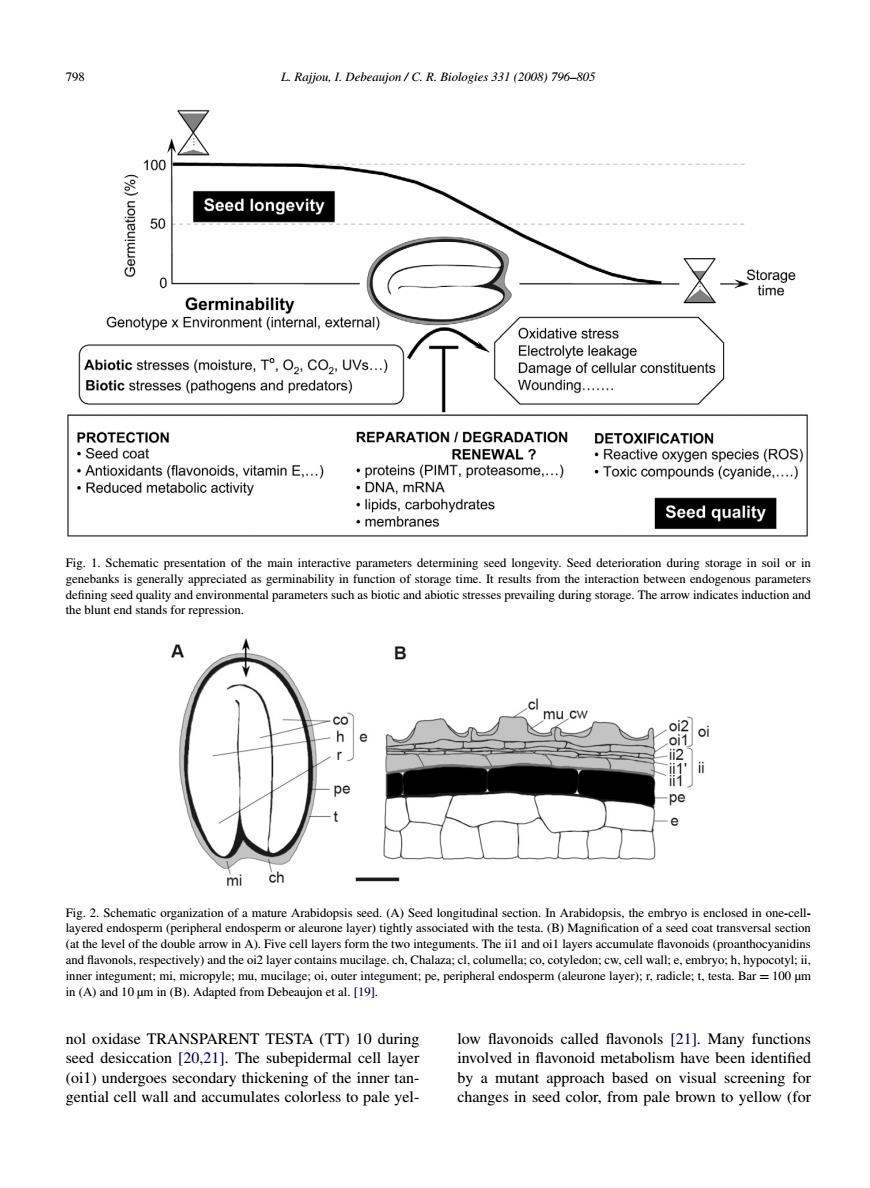正在加载图片...

798 LRajjou.1.Debeaujon/C.R.Biologies 331(2008)796-805 10( Seed longevity Oxidative stress Electrolyte leakage Abiotic stresses(moisture,.T°,O2,C02,UVs amage of cellular constituents Biotic stresses(pathogens and predators) REPARATION /DEGRADATION RENEWAL pecies (ROS proteins (PIMT,proteasome.) Toxic compounds (cvanide...... lipids.carbohydrates membranes Seed quality Fig1.Schematic presentation of the main int active parameters determining seed longevity.Seed deterioration during storae d qualiyand B cl mu cw oi2 oi ch of a mature level of the ocyanid h hy nol oxidase TRANSPARENT TESTA (TT)10 during low flavonoids called flavonols [21].Many functions seed desiccation [20.21].The subepidermal cell layer involved in flavonoid metabolism have been identified (oil)undergoes secondary thickening of the inner tan- by a mutant approach based on visual screening for gential cell wall and accumulates colorless to pale yel- changes in seed color,from pale brown to yellow (for798 L. Rajjou, I. Debeaujon / C. R. Biologies 331 (2008) 796–805 Fig. 1. Schematic presentation of the main interactive parameters determining seed longevity. Seed deterioration during storage in soil or in genebanks is generally appreciated as germinability in function of storage time. It results from the interaction between endogenous parameters defining seed quality and environmental parameters such as biotic and abiotic stresses prevailing during storage. The arrow indicates induction and the blunt end stands for repression. Fig. 2. Schematic organization of a mature Arabidopsis seed. (A) Seed longitudinal section. In Arabidopsis, the embryo is enclosed in one-celllayered endosperm (peripheral endosperm or aleurone layer) tightly associated with the testa. (B) Magnification of a seed coat transversal section (at the level of the double arrow in A). Five cell layers form the two integuments. The ii1 and oi1 layers accumulate flavonoids (proanthocyanidins and flavonols, respectively) and the oi2 layer contains mucilage. ch, Chalaza; cl, columella; co, cotyledon; cw, cell wall; e, embryo; h, hypocotyl; ii, inner integument; mi, micropyle; mu, mucilage; oi, outer integument; pe, peripheral endosperm (aleurone layer); r, radicle; t, testa. Bar = 100 µm in (A) and 10 µm in (B). Adapted from Debeaujon et al. [19]. nol oxidase TRANSPARENT TESTA (TT) 10 during seed desiccation [20,21]. The subepidermal cell layer (oi1) undergoes secondary thickening of the inner tangential cell wall and accumulates colorless to pale yellow flavonoids called flavonols [21]. Many functions involved in flavonoid metabolism have been identified by a mutant approach based on visual screening for changes in seed color, from pale brown to yellow (for